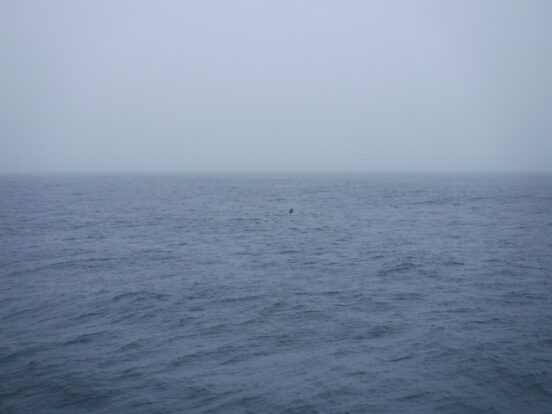“Now small fowls flew screaming over the yet yawning gulf; a sullen white surf beat against its steep sides; then all collapsed, and the great shroud of the sea rolled on as it rolled five thousand years ago”
When I started writing this post around ten days ago, it looked like in Europe at least the novel coronavirus was under control, and that lockdowns were likely to continue their slow easing until the end of the summer. I wanted to open by contrasting the relative ease of having a socially distanced package beach holiday (as this industry was restarting) with the impossibility of doing any kind of spontaneous travel (ie. hostel-hopping or bus-sleeping style backpacking). Since then it has become clear that all kinds of non-essential foreign travel are going to be near-impossible for the foreseeable future.
That said, back at this time last summer, in the pre-Covid days when unscheduled travel was relatively easy, I spent some time off travelling around and about the Basque Country. In particular I walked a couple of stages of the Camino Norte along the coast of Gipuzkoa, the northeastern-most of the Basque provinces in Spain and also the historical centre of the global whaling industry.
Bayonne and the Vikings
According to some sources, whaling in the Basque Country may date back as far as the 7th Century, with whale-spotting towers once standing on the hilltops and mountain passes which now form the Camino. I started my journey through the region at Bayonne, the northernmost limit of the French Basque Country, before getting the train down to the Spanish border at Hendaye. Bayonne first enters the whaling story as the city which monopolised trade in whale tongues, but more importantly it was here that the Vikings established a riverside settlement, trading and skirmishing with the local Basque population.
The Vikings that the Basques encountered were, naturally, experts at navigating the Atlantic and harvesting its resources. From Scandinavia came new ideas in ship-building, and, at around the same time, new methods for preserving the dried cod which would sustain long ocean voyages. The knowledge extracted from Viking settlers at Bayonne would be one of the factors which allowed the Basque Country to establish itself as a medieval whaling superpower.
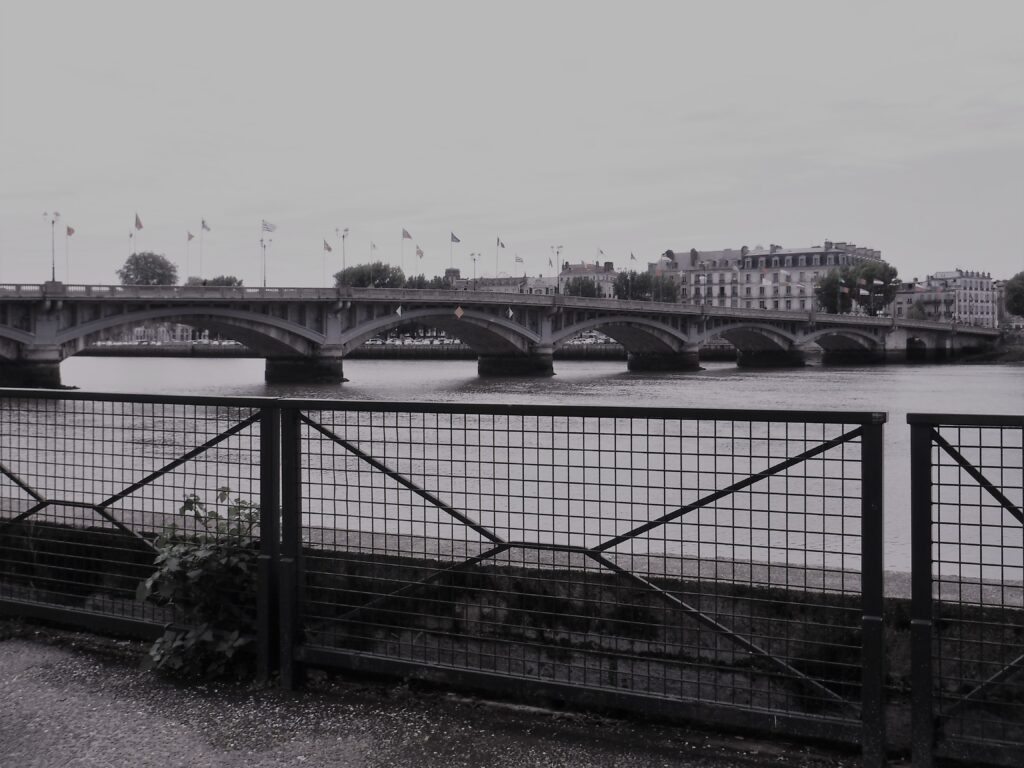
Nowadays the old Viking homelands remain synonymous with the slaughter of whales, as both Norway and Iceland – along with Japan – refuse to abide by international conventions. The practice has long been controversial even within Norway itself, which became the first country to (temporarily) ban whaling in its waters as early as 1904. In whaling hotspots such as the Lofoten Islands, conflicts would often arise between whale-hunters and those fishermen who relied on whales to drive shoals of fish closer to shore. Nevertheless it was a Norwegian, Svend Foyn, who invented the grenade-tipped harpoon, and another Norwegian, Christian Salvesen, who kickstarted the 19th Century whaling industry in Leith.
Christian Salvesen was born in Mandal, a town near Kristiansand described in Lonely Planet Scandinavia as “gateway to the charming seaside villages of Norway’s southern coast”. Karl Ove Knausgaard describes the journey south from Stavanger to Kristiansand as “…mountain crags here and there among the trees, hills covered with spruce and oaks, aspen and birch, sporadic dark moorland, sudden meadows, flatland with densely growing pine trees”. However, like Knausgaard, the young Salvesen left Kristiansand, eventually settling in Leith in 1851.
Over the following decades whaling helped to strengthen economic and social ties between Scandinavia and the east coast of Scotland. The building on North Junction Street which now houses the Leith School of Art was constructed in the 1860’s as a “Scandinavian Church”, based on the design of a church in Copenhagen and intended to serve primarily the numerous Scandinavian seamen working in Leith. According to Leith Local History Society, the first pastor of the church was welcomed by Salvesen himself.
Across the Water of Leith at Timber Bush, the blubber from slaughtered whales was boiled in vats, becoming the raw material for soaps and margarines. Meanwhile down the road in Newhaven the blubber boiling was carried out at Fishermen’s Park, and the Newhaven Heritage Centre recalls “it was a gala occasion every April, right up to the early 20th century, when the 400-ton whalers would sail”. From the 17th until the early 19th century Scottish whalers had looked north to the Arctic, but the arrival of Christian Salvesen and Son would take whaling in a different direction.
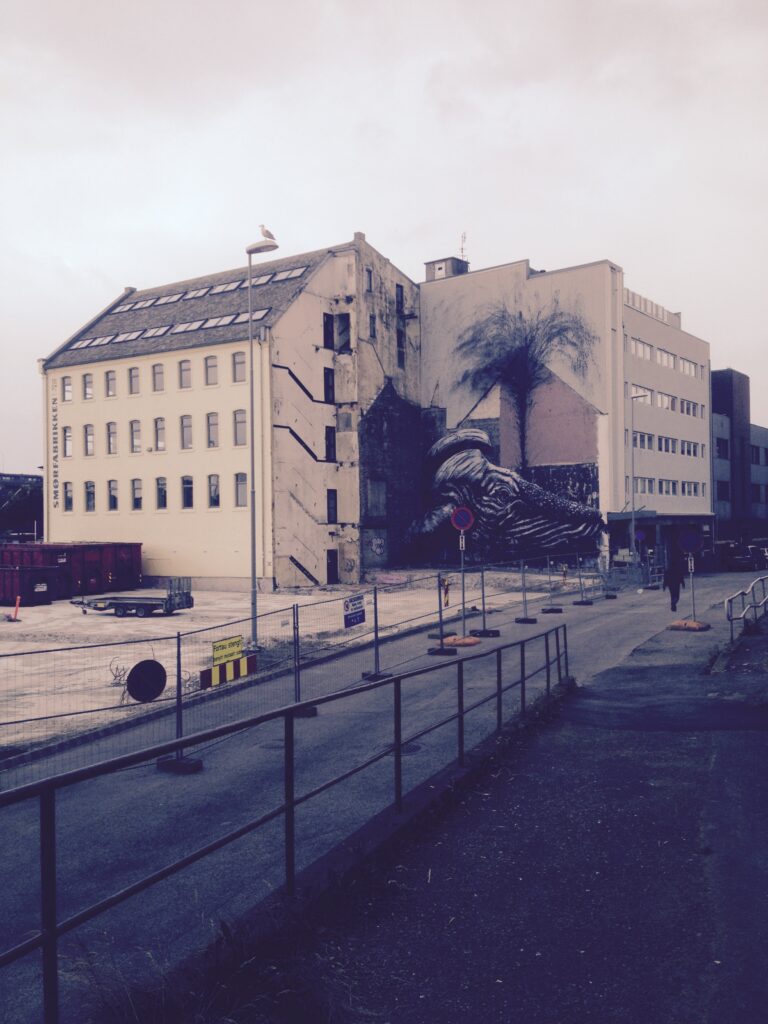
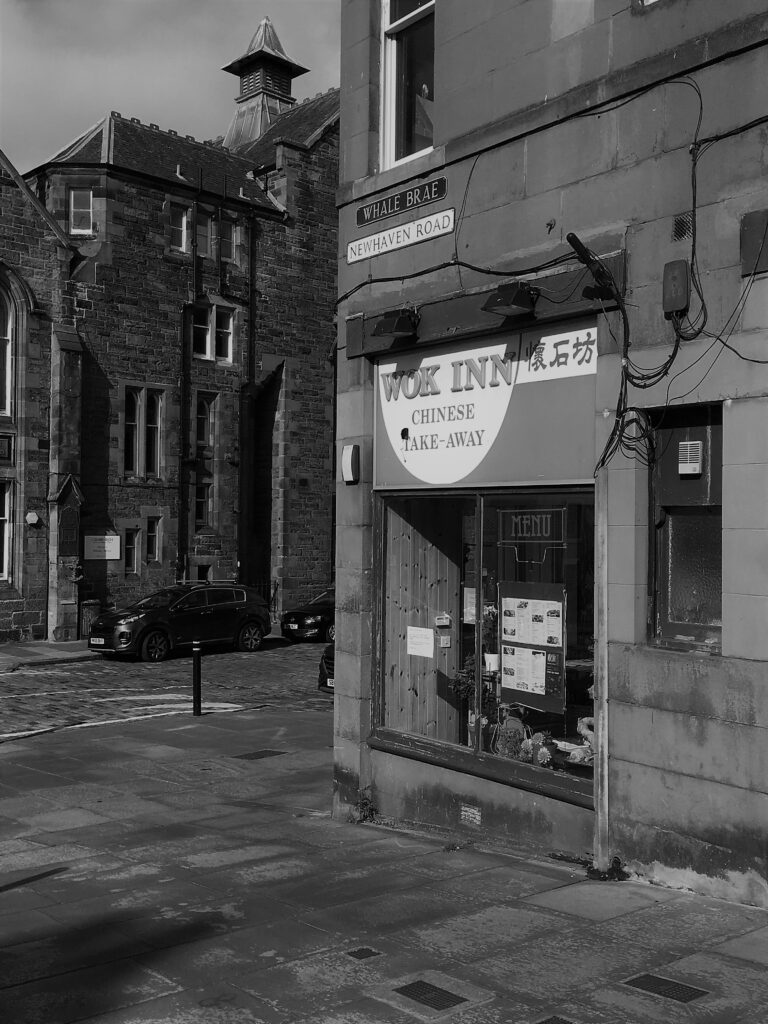
Gipuzkoa
From Hendaye on the French side of the border I walked across to Irun in the Basque Autonomous Region of Spain. A few miles further on I arrived at Hondarribia, a medieval walled town which was just gearing up to celebrate the 200th Anniversary of Herman Melville’s birth. The next day I walked over the Jaizkibel range, returning to sea level at the industrial region around the Bay of Pasaia. This bay is the heart of the Gipuzkoan whaling tradition; its legacy is visible both in the modern shipyards at the mouth of the Oiartzun River and on either side of the bay in the historic settlements of Pasai Donibane and Pasai San Pedro. In particular Pasai Donibane, which is now a quiet village, was once the main Basque port, important not only in whaling times but further back in history as a gateway for Roman mineral exports.
By around 1000 years ago, Basque whalers were no longer limiting themselves to the narrow continental shelf off the Bay of Biscay. Instead they had followed the Viking lead into the richer whaling grounds of the Arctic, onboard ships expertly crafted for the open ocean, and sustained by rations of salted dried cod. As Mark Kurlansky explains in his book The Basque History of the World, “The Basques gradually became not only the world’s purveyors of whale and cod products but the leading shipbuilders, pilots and navigators”. Furthermore, the high cost of Arctic expeditions influenced the economic norms in the region: “Capitalists before capitalism, Basques financed most of their shipbuilding through private venture capital.”
Some competitors grew suspicious of the vast catches of fish and whales being hauled in at Gipuzkoan ports like Pasai San Donibane – could there be some other whaling ground beyond the North Sea? It is possible that Basque fishermen arrived on the coast of what is now Newfoundland after the Vikings (who were themselves of course latecomers, long preceded by First Nations peoples such as the Mi’kmaq) but before the European “discovery” of the Americas by Christopher Columbus in 1492.

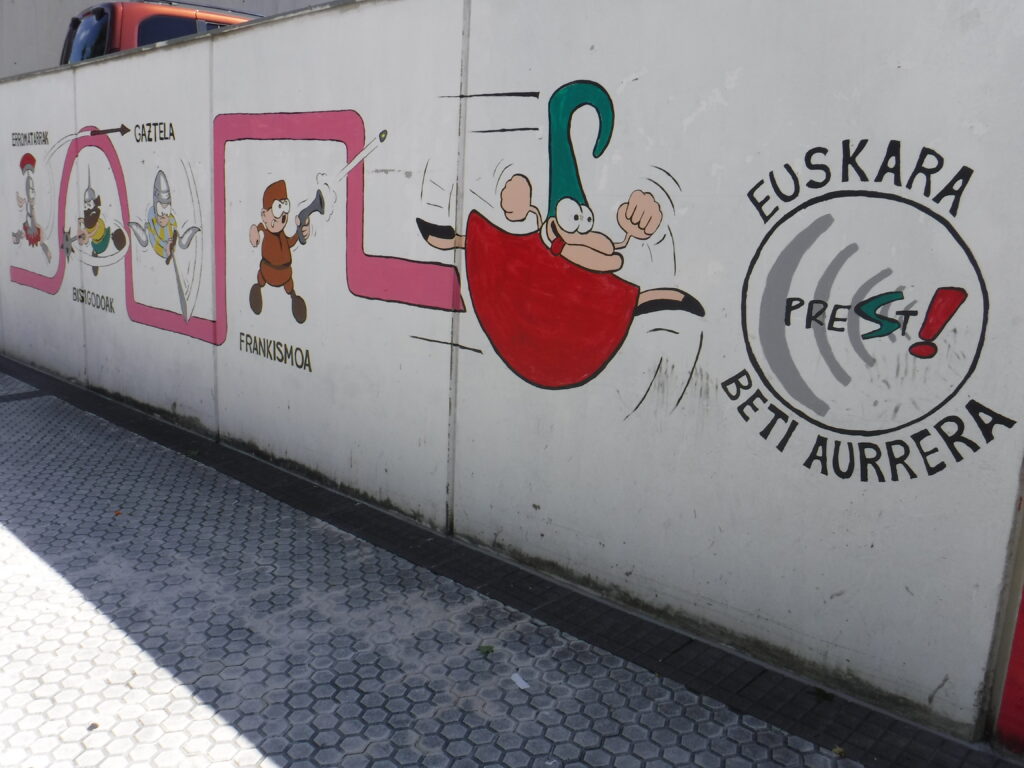
Kurlansky explains why whaling boats might be more likely to encounter unexpected continents than other fishermen: “Most fishermen had little reason to cross the Atlantic, since the catches vanish with the end of the European continental shelf and do not pick up again until the other side. But the Basques chased whales that travelled to subarctic waters and then dropped down along both the European and American coastlines”. Whether or not Basque whalers set foot in the Americas before Columbus, it is well-documented that the Basque population was over-represented in the early expeditions of European colonizers.
From Pasaia the Camino climbs uphill again, following a winding path through increasingly dense woodland until San Sebastian. I spent the night there at a hostel and carried on walking westwards the next day. On the way I passed through Orio, a town draped in the yellow flags of its rowing team. Regular and well-supported rowing regattas contested between nearby ports are another legacy of the skills developed to pursue whales, and Orio are one of the traditionally dominant teams.
Further on I arrived at the town of Getaria, dramatically set on a bed of slate which slopes past busy bars and restaurants to a sandy beach. Getaria is notable for the presence of long outdoor escalators lining the steep slopes from the commercial centre to the higher reaches of the town. It is also the birthplace of Juan Sebastian Elkano, who became the first man to circumnavigate the globe when he returned to port in Seville in 1522. Not finding anywhere to stay in Getaria, I walked on and managed to secure the last available hotel room in Zumaia, close to the border of Gipuzkoa with the westernmost Basque province, Vizcaya.
Vizcaya to California
In 1602 Juan Sebastian Vizcaino (aka Juan Sebastian of Vizcaya) travelled up the coast of modern day Mexico, passing Baja California and continuing North to a large bay, where the Kumeyaay people had established a village called Kosa’aay. Vizcaino took the liberty of “naming” the island in the bay (Coronado), as well as the mainland area (San Diego). In terms of the bay itself, a later voyage recalled “This bay also had been already surveyed by the Almirante [one of Vizcaino’s ships] who gave it the name of Bahia de Belenas or Whale Bay, on account of the multitudes of that large fish they saw there, being drawn thither by the abundance of several kinds of fish”. Vizcaino continued up the Californian coast, past more rich wildlife at Monterey, as far as San Francisco.
Like the Basques of Gipuzkoa and Vizcaya, civilisations along the west coast of America were full of accomplished fishermen and had a long history of whaling. For these tribes, such as the Makah in modern day Washington state, the hunting of whales provided not only meat but also the raw materials for the art of whalebone carving. Furthermore communities engaged in whaling were necessarily experts at reading whale behaviour, tides and other ocean variables to maximise the chance of success for each hunt, during which they used specialised cedar canoes and harpoons. The website Native American Roots describes harpoons tipped with mussel shells and barbed with elk horns, used mainly to hunt gray and humpback whales.
These were the same species targeted by settler shore-whaling on the Californian coast. Whilst Basque, Norwegian and Scottish whaling ships were at this time travelling long distances to hunting grounds, the whale populations off the coast of California were large enough to sustain a large industry close to shore. A 1922 report by Edwin C Starks for the State of California Fish and Game Commission explains how shore-based and ship-based whaling targeted different species: “The sperm whale was practically never taken by the shore stations, and the right whale only very occasionally, not often enough to be counted upon. The ships paid little attention to humpback whales, though occasionally one would fill up on humpback oil… At the shore stations the catch was practically all made up of gray and humpback whales”.

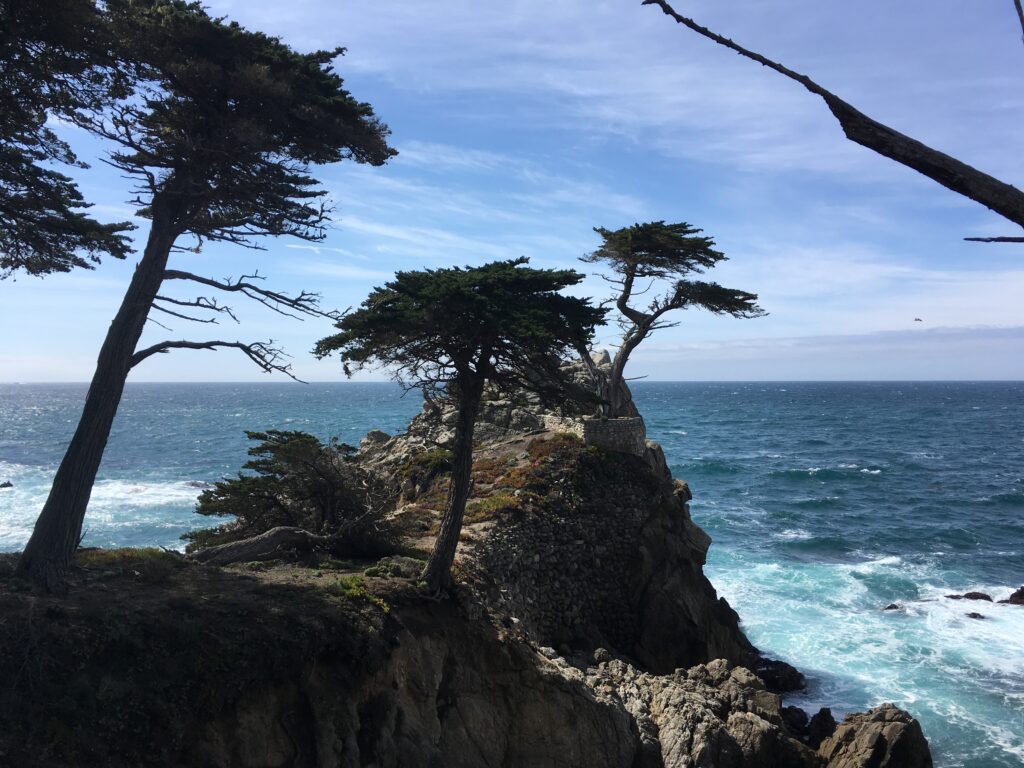
After the imposition of the 1855 Treaty of Neah Bay, the Makah lost much of their land in the Pacific Northwest, but the treaty granted the tribe the right to continue fishing and hunting for whales. Makah whaling continued into the twentieth century, eventually becoming unviable in the 1920’s as commercial (European) shore-whaling severely depleted gray whale populations along the entire Pacific coast. Its not hard to see why shore-whaling was so destructive from Starks’ account of the practice in California at around the same time: “The gray whale resorted to the lagoons of Lower California to breed. Here the lagoon whalers hunted them, and as the females entered the lagoons while the males stayed out in the open ocean the former were the more easily taken… Thus the sex most important to breeding was the most easily taken, and her death meant the death of her calf whether or not it was born… both coming and going to its breeding grounds it had to run the gauntlet of the whale stations and at its breeding grounds its habits made it an easy victim to the whale ships.”
Portuguese fishermen had begun commercial whaling on the central Californian coast in the mid 19th century, with early stations established at Monterey, followed by another a few miles south in Carmel. As I’ve written before, the Monterey Bay area is home to an important marine ecosystem, but one that is so naturally rich that successive generations failed to appreciate its vulnerability. From there the whaling industry expanded southwards, with a station near San Luis Obispo and two at San Diego; as well as northwards, to Bolinas Bay.
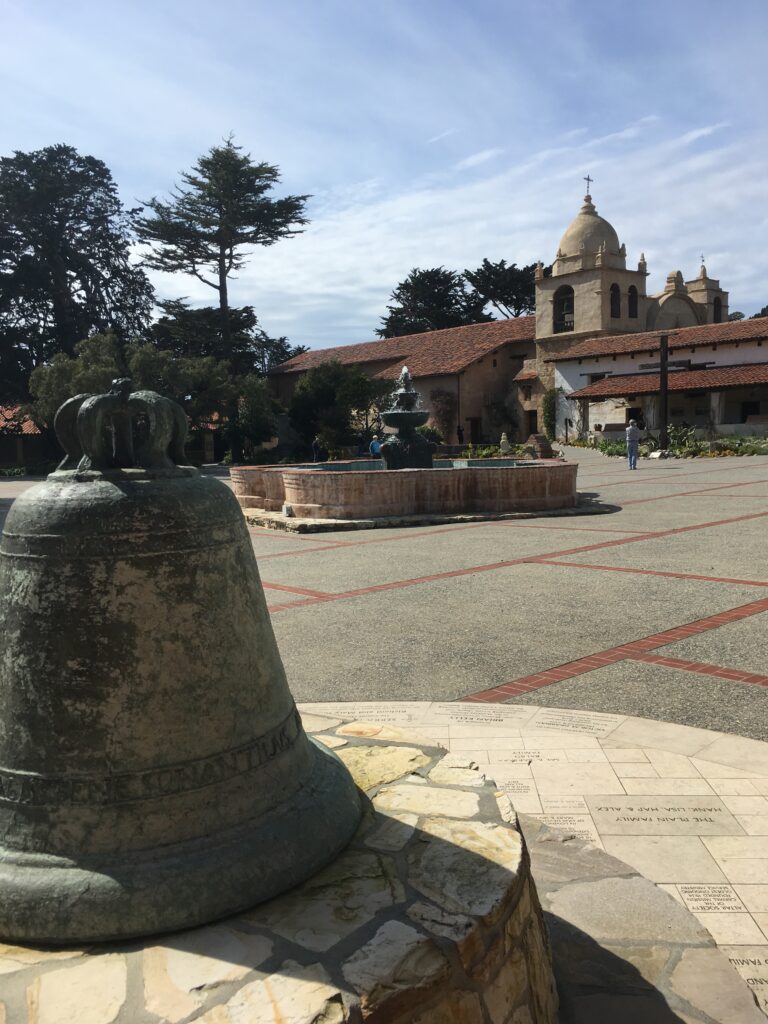
The Salvesen Company
The first Antarctic whaling expedition to sail from Leith under the banner of Christian Salveson and Son was in 1908; within three years the company had the largest whaling fleet in the world. Whaling continued until the 1960’s – in the final hunting season alone 3500 whales were caught and processed onboard the company’s “floating factory ships”. That year a further 1055 whales were processed on land at Leith Harbour, the large whaling station established and named by the Salveson company on the island of South Georgia. With the whalers came invasive species and foreign livestock such as reindeer, causing severe damage to the unique South Georgian ecosystem. Other living species were transported in the opposite direction. In 1914 a Salvesen ship returning from the Southern Ocean brought three king penguins to Scotland, where they were an important early addition to Edinburgh Zoo. The chick which was successfully hatched five years later became the first penguin born in captivity anywhere in the world.
During the Great Depression of the 1930’s the Salvesen operation expanded by acquiring ships from its struggling competitors. At the onset of the Second World War, The Ships List reports that the firm operated at least 60 boats for catching whales, in addition to factory ships and support vessels. During the war many of these ships were pressed into navy service, and some were sunk. Then, a year after the end of the war, came the first International Convention for the Regulation of Whaling.
It is important to remember that this convention did not arise out of concern for animal welfare or even any deep understanding of the importance of whales for wider ecosystems. Instead it asserted that “whale stocks are susceptible of natural increases if whaling is properly regulated” and that “increases in the size of whale stocks will permit increases in the number of whales which may be captured without endangering these natural resources”.
The Christian Salvesen company ceased hunting whales in 1963, but used their existing profile and networks (as well as capital derived from whaling) to establish themselves as a major European logistics provider. The company continued to operate independently in this new form until it was bought out by another logistics firm in 2007.
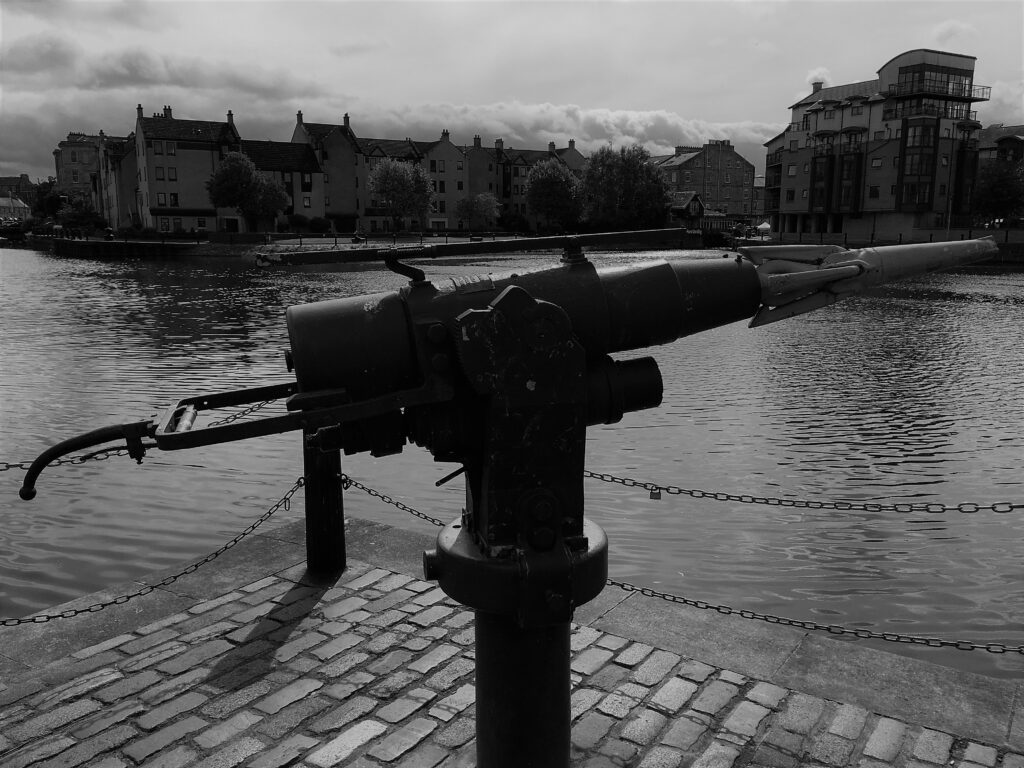
Impact on Ecosystems and Carbon
From 1989 until 2003 commercial whaling was halted in Iceland. When it resumed it was driven in part by curious tourists demanding to sample whale meat, and perhaps also by the perception that whaling helped to enhance other catches. Since the resumption over 1500 whales have been killed by Icelandic whalers, but now there are signs that the tide may be turning once again. The National Geographic reports that no whales have been taken in the past two years, so that, with a similar decline being seen in Norway, Japan may soon be the only country engaged in commercial whaling. However the historical impacts of removing such a large proportion of the world’s whales on the wider biosphere are still not fully understood.
It is ironic given what we now know about climate change that Edwin C. Starks concluded in his report that “The discovery of mineral oils put off for a time the complete extermination of the whales … had mineral oils not been introduced the whales would all have been gone long ago, and probably, the porpoises, grampuses, seals, and every other oil producing animal with them”. Now, like all marine life, whales are having to adjust to unprecedented changes in their habitats due to ocean warming. But what about the impact of whales themselves on carbon sequestration?
In a study published in 2010, Andrew Pershing and colleagues find that not only has whaling reduced the total whale biomass in the world oceans to around 25% of its natural value (as calculated in previous work), but that the size distribution of whales has become skewed towards smaller animals, due to the targeting of the largest whales species (and the largest individuals within each species). Since smaller whales are less efficient at sequestering carbon, this exaggerates the degree to which whaling has impacted carbon cycles. Their model suggests that 8.7 megatons of additional carbon could be sequestered by returning whale populations to pre-industrial levels, which the authors compare in magnitude to a reforestation project on the scale of the Rocky Mountains National Park. This compares favorably to the gains in carbon sequestration which have been theorized for artificial iron fertilisation of primary productivity in the Southern Ocean. However Pershing et al. admit that there is no easy and obvious way that whale populations could be returned to these levels by human intervention (which is also the case with iron fertilisation).
The role of whales in Southern Ocean iron cycling was itself the subject of a 2016 paper led by Maria Maldonado, which found that whaling had reduced total iron recycling by baleen whales by 90% – although even before this reduction whales carry out a relatively small part of the total iron recycling in the region. Meanwhile the well-named French MOBYDICK project is carrying out oceanographic surveys near the Kerguelen Islands, a remote location in the Southern Ocean. The scientists working on MOBYDICK are using high-resolution measurements and analysis to elucidate the links between carbon export through the water column and the state of the entire food-chain, including whales and commercial fisheries.
Lockdown
One impact of the Covid-induced slowdown in global trade this year has been a partial emptying of human activity from the open ocean. With the quieter seas during lockdown, is it possible that whales will change how they communicate with each other? Carl Sagan famously warned back in the 1980’s of the impact of ship and submarine noise pollution on whale communication, and this remains an active topic of research.
In Edinburgh work on the new tramline connecting Leith and Newhaven was interrupted by the lockdown. It restarted in June, and construction workers promptly hit on a large whalebone, perhaps from a natural beaching, or perhaps a relic of an industry which continues to cast a long shadow over our cultures and our economies, as well as our marine ecosystems.
The quote at the start of this article comes from the end of Moby Dick, by Herman Melville. Throughout this article I have made extensive use of two sources in particular: “The Basque History of the World” by Mark Kurlansky and “A History of Californian Shore Whaling” by Edwin C. Starks. All the photos used are my own, but I used the “Footprint Handbook to Northern Spain” to aid my recollections, as well as the Lonely Planet guides to Scandinavia and California.
Watch:
Award-winning short film about the fishing community at Hondarribia
Carl Sagan on whale communication as featured in Cosmos
Listen:
BBC In Our Time podcast on the natural history of the whale
National Geographic podcast on whale communication during lockdown
Read:
National Geographic on whaling in Norway…
The Guardian on abandoned whaling facilities around South Georgia
Native American Roots on Makah whaling
Local history societies for Leith…
and finally, the street art scene in Stavanger
